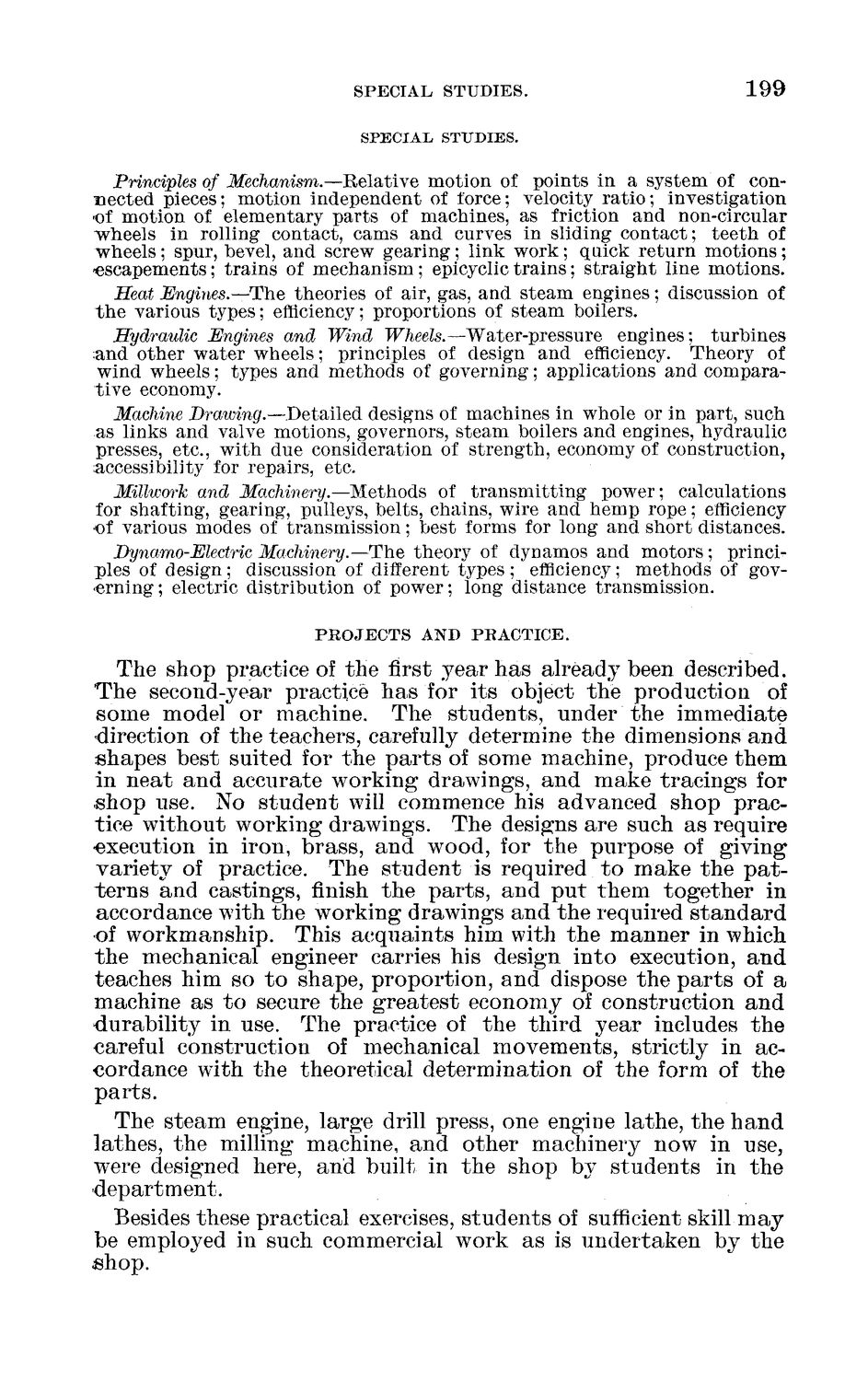| |
| |
Caption: Board of Trustees Minutes - 1890
This is a reduced-resolution page image for fast online browsing.

EXTRACTED TEXT FROM PAGE:
SPECIAL STUDIES. SPECIAL STUDIES. 199 Principles of Mechanism.—Relative motion of points in a system of connected pieces; motion independent of force; velocity ratio; investigation of motion of elementary parts of machines, as friction and non-circular wheels in rolling contact, cams and curves in sliding contact; teeth of wheels; spur, bevel, and screw gearing; link work; quick return motions; escapements; trains of mechanism; epicyclictrains; straight line motions. Heat Engines.—The theories of air, gas, and steam engines; discussion of the various types; efficiency; proportions of steam boilers. Hydraulic Engines and Wind Wheels.—Water-pressure engines; turbines rand other water wheels; principles of design and efficiency. Theory of wind wheels; types and methods of governing; applications and comparative economy. Machine Drawing.—Detailed designs of machines in whole or in part, such as links and valve motions, governors, steam boilers and engines, hydraulic presses, etc., with due consideration of strength, economy of construction, accessibility for repairs, etc. Millvoork and Machinery.—Methods of transmitting power; calculations for shafting, gearing, pulleys, belts, chains, wire and hemp rope; efficiency of various modes of transmission; best forms for long and short distances. Dynamo-Electric Machinery.—The theory of dynamos and motors; principles of design ; discussion" of different types ; efficiency; methods of governing ; electric distribution of power; long distance transmission. PROJECTS AND PRACTICE. The shop practice of t h e first year h a s already been described. T h e second-year practice h a s for its object t h e production of some model or machine. The students, under the immediate direction of the teachers, carefully determine the dimensions a n d shapes best suited for the p a r t s of some machine, produce them in n e a t and accurate working drawings, and make tracings for shop use. No s t u d e n t will commence his advanced shop practice without working drawings. The designs are such as require execution in iron, brass, and wood, for the purpose of giving variety of practice. The student is required t o make the p a t t e r n s and castings, finish t h e p a r t s , and p u t them together in accordance with the working drawings and the required s t a n d a r d of workmanship. This acquaints him with t h e manner in which t h e mechanical engineer carries his design into execution, a n d teaches him so t o shape, proportion, and dispose the p a r t s of a machine as t o secure the greatest economy of construction and durability in use. The practice of the third year includes t h e careful construction of mechanical movements, strictly in accordance with the theoretical determination of t h e form of t h e parts. The steam engine, large drill press, one engine lathe, the h a n d lathes, the milling machine, and other machinery now in use, wrere designed here, and built in t h e shop by students in the -department. Besides these practical exercises, students of sufficient skill m a y be employed in such commercial work as is undertaken by t h e shop.
| |